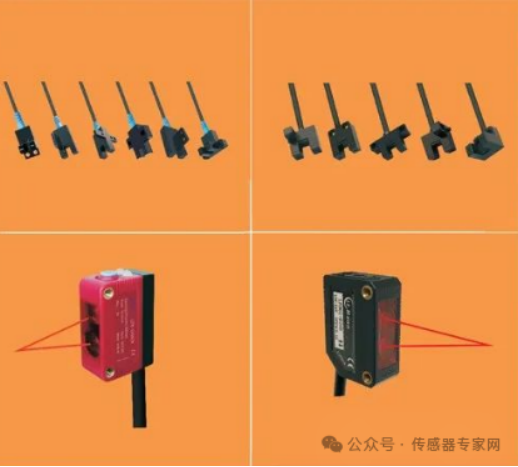As an important member of the sensor field, photoelectric sensors, with their unique optical principles, can accurately detect key parameters such as the presence, position, speed, and movement of objects. The following is a deep analysis of the types and working principles of photoelectric sensors.

Category Overview
Scattering photoelectric sensor: This type of sensor cleverly utilizes the scattering effect of objects on light. When an object passes through the sensor beam, some of the light is scattered, which is then captured by the sensor and triggers a signal. This type of sensor plays an important role in object movement or position detection. Reflective photoelectric sensor: Its working principle is based on the principle of light reflection. Sensors emit light towards objects, and when the light encounters the surface of the object, most of the light is reflected back to the sensor. After being received by the sensor, this reflected light will be converted into corresponding electrical signals. This type of sensor is particularly common in automatic doors and security systems, used to detect the presence or position of objects. Infrared photoelectric sensor: By utilizing the penetrability of infrared radiation, infrared photoelectric sensors can detect small movements or hidden objects. In home security systems, infrared photoelectric sensors are commonly used to detect the presence of the human body, and their infrared light has good penetration and reflection characteristics for the human body. Fiber optic sensor: Fiber optic sensors fully utilize the transmission characteristics of optical fibers. According to the principle of light intervention or scattering, fiber optic sensors can measure various physical quantities such as pressure, deformation, temperature, humidity, etc. The uniqueness of this sensor lies in its wide measurement range and high accuracy and stability. Photodiode and photomultiplier tube sensors: Both sensors are based on the principle of photoelectric effect. Photodiodes can generate current under illumination, and the magnitude of the current is proportional to the intensity of the light. The photomultiplier tube achieves high sensitivity measurement of optical signals through the process of electron multiplication. Groove shaped, reflective, and plate type photoelectric sensors: These three types of sensors have different structures, but all achieve detection functions by emitting and receiving light beams. Slot shaped photoelectric sensors use slot shaped structures to block light; The reflective photoelectric sensor achieves long-distance detection by placing the transmitter and receiver on both sides of the detection path; Reflective plate photoelectric sensors integrate the transmitter and receiver into the same device, using a reflective plate for reflection detection.
Working principle revealed
The working principle of photoelectric sensors is mainly based on the photoelectric effect, which is the process of converting optical signals into electrical signals. Its core components include a transmitter, a receiver, and a detection circuit. Sender: responsible for emitting a beam of light towards the target. These beams usually come from semiconductor light sources such as LEDs, laser diodes, etc. The emission mode of the beam can be adjusted according to the detection requirements, such as continuous emission or pulse emission. Receiver: composed of optoelectronic devices such as photodiodes and phototransistors. These devices are highly sensitive to the intensity and wavelength of light. In front of the receiver, optical components such as lenses and apertures are usually equipped to improve light reception efficiency and reduce interference. Detection circuit: located after the receiver, responsible for processing the received optical signal. The detection circuit extracts effective signals through processing methods such as filtering and amplification, and converts them into control signals or data outputs. During this process, the detection circuit can filter out noise and interference, ensuring the accuracy and stability of the signal.
Source: Sensor Expert Network



